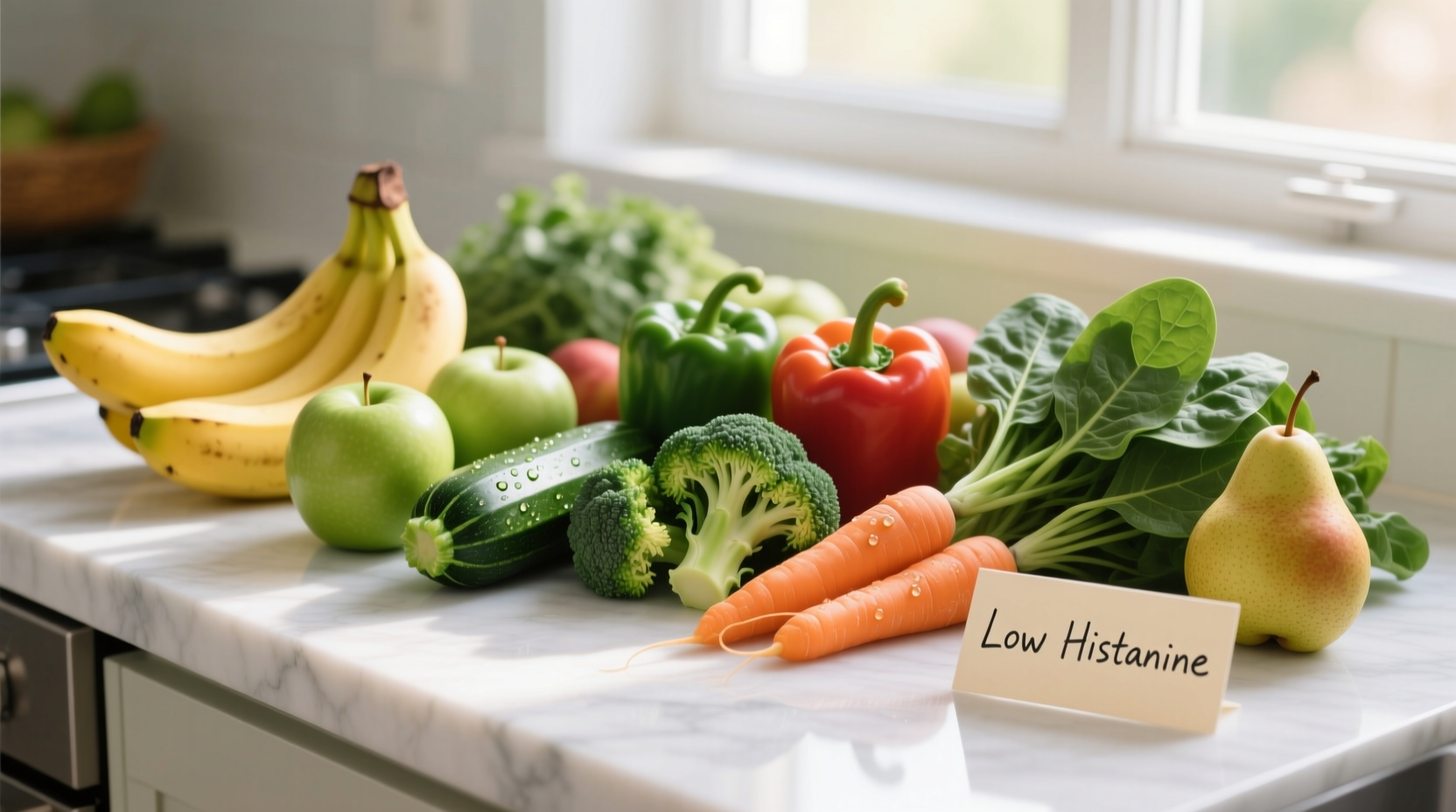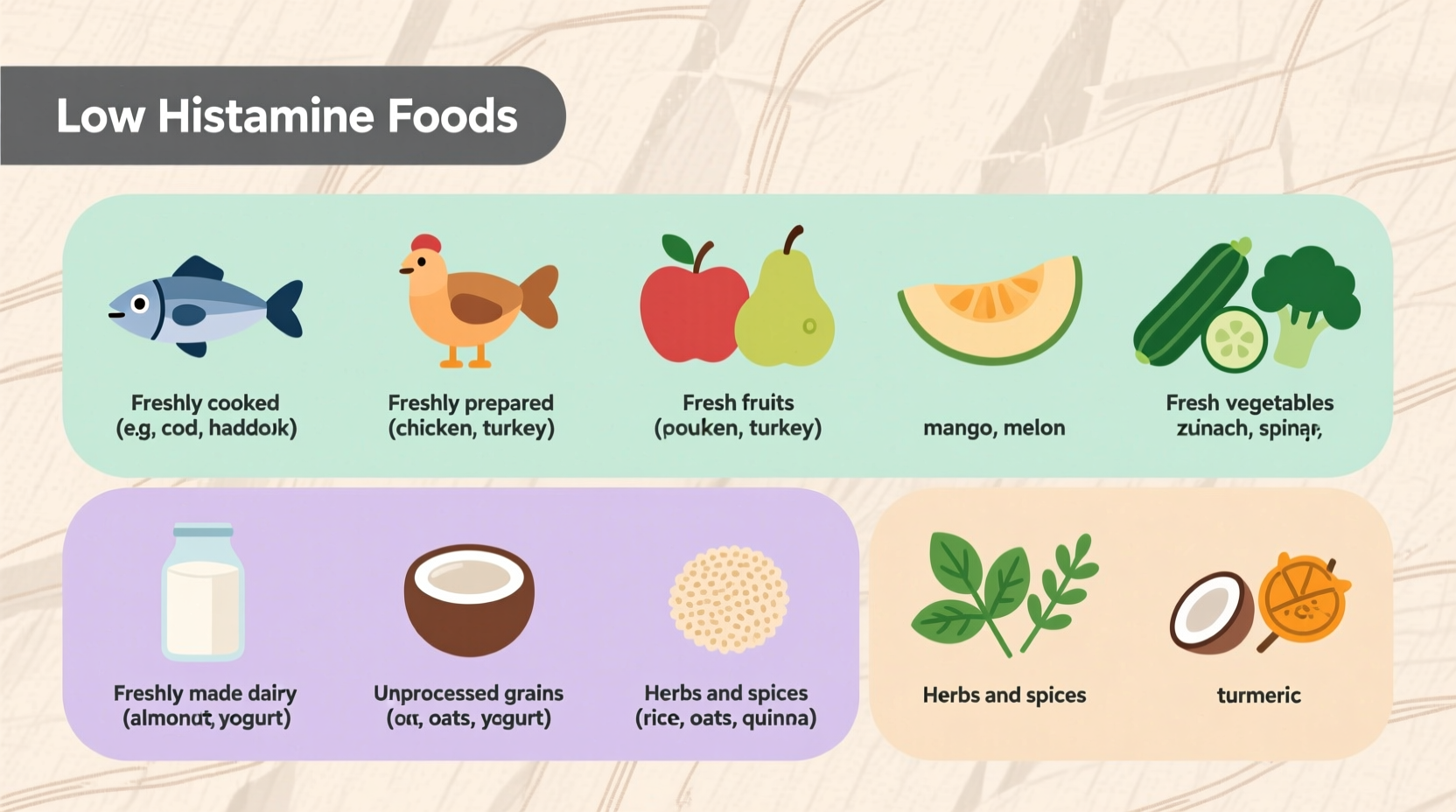Low histamine foods include fresh vegetables (except tomatoes and eggplant), most fresh fruits (except citrus and berries), fresh meat and poultry, wild-caught fish, gluten-free grains, and certain dairy alternatives. These foods can help manage histamine intolerance symptoms when incorporated into a carefully planned diet.
Discover exactly which foods belong on your plate when managing histamine intolerance. This comprehensive guide delivers a science-backed food list you can trust, practical meal planning strategies, and clear explanations of how histamine affects your body. Whether you're newly diagnosed or optimizing your current diet, you'll gain the knowledge to make informed food choices that support your wellbeing.
Understanding Histamine and Your Body
Histamine is a chemical compound involved in your immune response and digestion. While essential for normal body functions, some people develop histamine intolerance when their bodies can't properly break down histamine from foods. This occurs due to reduced activity of diamine oxidase (DAO), the primary enzyme responsible for histamine breakdown.
According to research published in the Journal of Human Nutrition and Dietetics, approximately 1-3% of the population may experience histamine intolerance, with women being more frequently affected than men. Symptoms often include headaches, digestive issues, skin reactions, and nasal congestion that appear within hours of consuming high-histamine foods.
Your Complete Low Histamine Food Guide
Navigating which foods are safe requires understanding both naturally low-histamine options and preparation methods that minimize histamine formation. Freshness and proper storage significantly impact histamine levels in otherwise acceptable foods.
| Food Category | Safe Choices | Foods to Limit or Avoid |
|---|---|---|
| Fresh Vegetables | Leafy greens, broccoli, squash, asparagus, sweet potatoes | Tomatoes, eggplant, spinach, avocado, sauerkraut |
| Fresh Fruits | Melon, mango, pear, apple, banana (not overripe) | Citrus fruits, strawberries, pineapple, kiwi, dried fruits |
| Proteins | Fresh chicken, turkey, lamb, wild-caught fish (immediately frozen) | Aged cheeses, processed meats, canned fish, shellfish |
| Grains | Rice, quinoa, oats, buckwheat, fresh gluten-free bread | Wheat products, sourdough bread, old pasta |
| Dairy Alternatives | Fresh coconut milk, almond milk (unsweetened), hemp milk | Cow's milk, yogurt, kefir, aged cheeses |
Key Considerations for Food Selection
Not all "low histamine" foods work for everyone with histamine intolerance. Individual tolerance varies based on several factors:
- Freshness matters: Histamine levels increase as foods age. Consume meat within 24 hours of purchase or freeze immediately.
- Preparation methods: Boiling can reduce histamine content in some vegetables compared to roasting or frying.
- Seasonal variations: Some foods like spinach contain higher histamine levels during certain growing seasons.
- Cross-reactivity: Certain foods like citrus may trigger histamine release even if they're not high in histamine themselves.

Implementing Your Low Histamine Diet
Starting a low histamine diet requires careful planning to ensure nutritional adequacy while avoiding symptom triggers. Registered dietitians specializing in food sensitivities recommend a phased approach:
- Elimination phase (4-6 weeks): Strictly follow low histamine guidelines while tracking symptoms
- Reintroduction phase: Gradually add potential trigger foods one at a time while monitoring reactions
- Personalization phase: Create your customized eating plan based on tolerance levels
The American College of Allergy, Asthma, and Immunology notes that "histamine intolerance is often misdiagnosed as food allergy" and emphasizes the importance of working with healthcare providers to rule out other conditions before starting dietary changes. Their clinical guidelines recommend professional supervision for dietary management of histamine-related symptoms.
Evidence-Based Dietary Strategies
Research from the European Academy of Allergy and Clinical Immunology shows that a properly implemented low histamine diet can reduce symptoms in 54-80% of individuals with confirmed histamine intolerance. However, the effectiveness depends on strict adherence and proper food selection.
A 2022 review in Nutrients journal highlighted that "the freshness of food and avoidance of fermented products represent the cornerstone of dietary management for histamine intolerance." The study also noted that cooking methods significantly impact histamine levels, with boiling generally producing lower histamine content than frying or roasting.
It's important to recognize that histamine intolerance often coexists with other conditions like SIBO (small intestinal bacterial overgrowth) or mast cell activation syndrome. The National Institute of Allergy and Infectious Diseases reports that addressing underlying conditions can improve histamine tolerance over time, potentially expanding dietary options.
Practical Meal Planning Tips
Creating balanced meals within low histamine parameters requires strategic planning. Here are evidence-based strategies to maintain variety while staying within safe histamine limits:
- Prepare and freeze single portions of cooked meats immediately after cooking
- Choose frozen vegetables over canned options
- Use fresh herbs instead of dried spice blends which may contain hidden histamine triggers
- Incorporate quercetin-rich foods like onions and apples which may support natural histamine breakdown
- Work with a nutritionist to ensure adequate nutrient intake, particularly vitamin B6 and copper which support DAO enzyme function
Dietary management of histamine intolerance has evolved significantly over the past decade. Early approaches focused solely on avoiding high-histamine foods, but current understanding emphasizes the importance of food freshness, preparation methods, and individual tolerance thresholds. The European Society for Clinical Nutrition and Metabolism now recommends a personalized approach rather than strict universal restrictions.
Maintaining Nutritional Balance
A common concern with restrictive diets is potential nutrient deficiencies. When properly planned, a low histamine diet can provide complete nutrition. Focus on incorporating diverse low histamine protein sources, colorful vegetables, and appropriate carbohydrate options.
The Academy of Nutrition and Dietetics emphasizes that "dietary management of food sensitivities should prioritize nutritional adequacy while addressing symptom triggers." They recommend regular monitoring of nutrient status, particularly for vitamins B6, C, and copper which support histamine metabolism.
Consider consulting with a registered dietitian who specializes in food sensitivities to create a balanced meal plan that meets your individual needs while managing histamine-related symptoms effectively.











 浙公网安备
33010002000092号
浙公网安备
33010002000092号 浙B2-20120091-4
浙B2-20120091-4